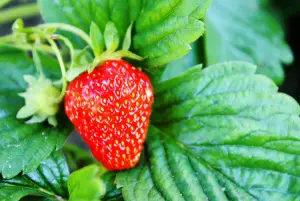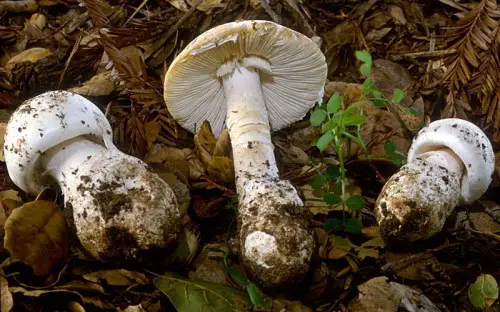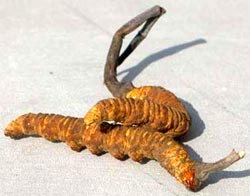Garden Strawberry
The Garden Strawberry is grown worldwide for its fruit, the common strawberry. This fruit is very popular not only for its aroma, but its delicious taste. It is used to make a variety of food products, such as jams and milkshakes. Even artificial strawberry aromas and flavouring are used in a variety of industrialized products, including food, fragrances, and lip balm.
The garden strawberry was first bred in 1740, in Brittany, France. It is actually a cross between Fragaria virginiana from the eastern coast of North America which was known for its flavour, and the Chilean and Argentinian Fragaria chiloensis which was known for its large size. Since the early 17th century, Fragaria x ananassa (Garden strawberry) cultivars have replaced woodland strawberries in commercial production.
Technically, the strawberry fruit is actually just an aggregate accessory fruit. This means that the fleshy part that we eat is not derived from the strawberry plants ovaries, but from the receptacle that holds the ovaries. Each “seed” on the outside of the strawberry fruit, is actually one of the flower’s ovaries with a seed inside it. Therefore, in both botanical and culinary terms, the entire strawberry is called a “fruit”.
Garden strawberry cultivars vary in size, flavour, colour, ripening season, fertility, and more. Some even vary in foliage and sexual organ development. Strawberry flowers look as if they are hermaphroditic, but they are actually neither female or male.
In commercial production, the garden strawberry plant is propogated from runnres. It is distributed as plugs or bare root plants. Farm cultivation exists in 2 models – either a perennial system, or an annual plasticulture system. However, a small amount of strawberries are produced in the off-season in greenhouses.
Most commercial strawberry producers use the plasticulture system. In this system, strawberries are grown in raised beds which are made each year, fumigated, and then covered with plastic to prevent erosion and the growth of weeds. Irrigation tubing runs underneath. At the end of the harvesting season, the plastic is removed and the plant is plowed into the ground. Strawberry plants only last for 1 to 2 years before they decline in productivity. Fruit quality also declines, so plants are replaced annually to improve yields and better plantings.
The perennial system uses the same plants every year. The plant grows on mounds or in rows. This system is common in colder climates, and has lower investment costs than the plasticulture system. It also has lower maintenance requirements, but yields are usually lower than in plasticulture.
Another system which is used the least utilises a compost sock. Strawberry plants grown in these compost socks produce higher oxygen radical absorption, flavonoids, fructose, anthocyanins, sucrose, glucose, citric acid, and malic acid as compared to the the plasticulture or perennial system.
If you are home owner who is a huge strawberry fan, you can easily grow them as a potted plant. This is a common sight in some strawberry growing places, such as Cameron Highlands in Malaysia.





